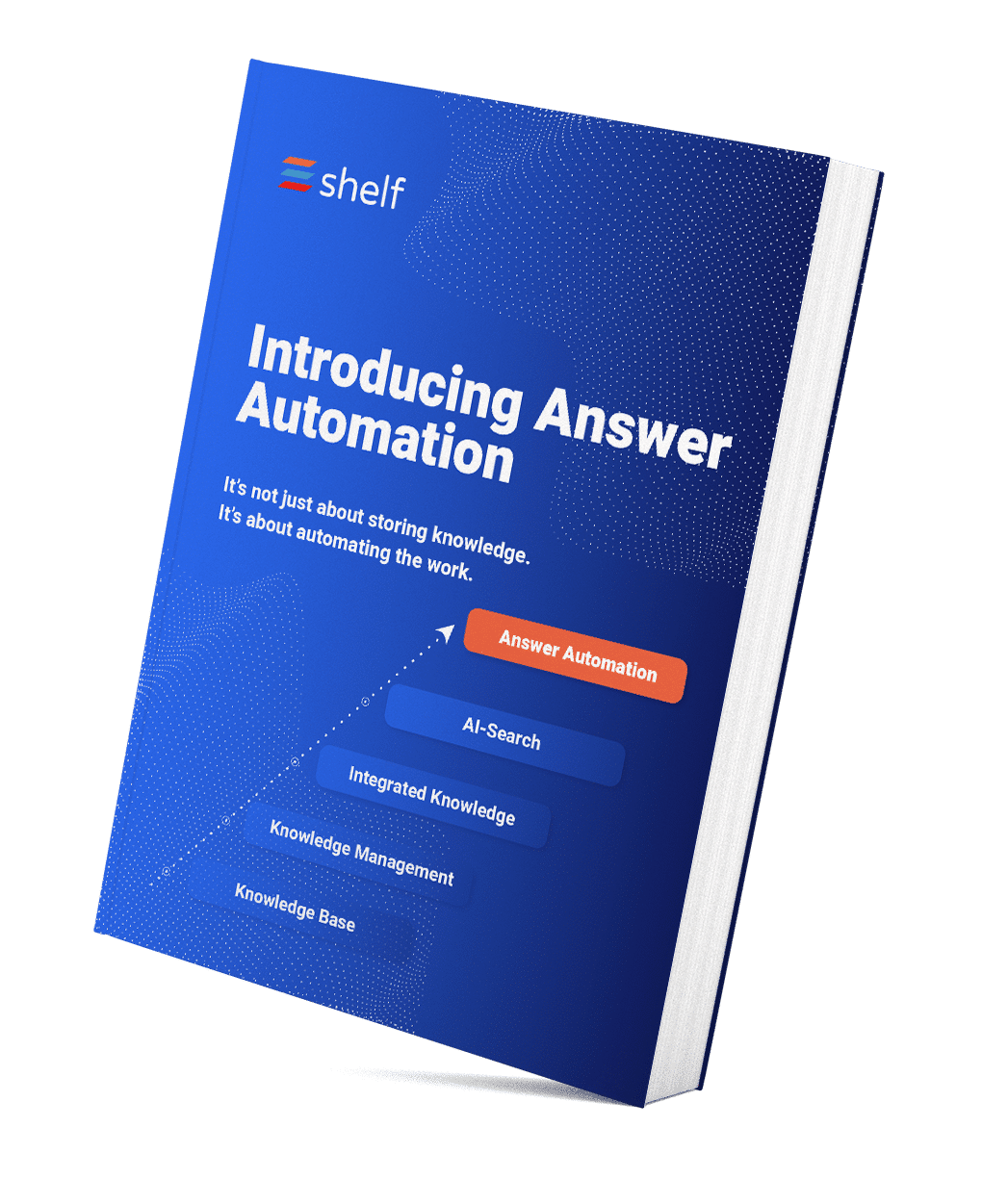As your support tickets keep coming in, wouldn’t it be nice to use knowledge to deflect a few requests? It took us 20 minutes to find this post on Reddit and yet companies take years to realize that providing content does not mean providing answers.

Conventional wisdom suggests the more knowledge agents have at their disposal, the easier it is to answer customer questions and close more tickets.
But is more knowledge always better? Would 57 articles on a topic reduce average handle time or even resolve an actual question? Agents often can’t find what they need not because of a lack of resources, but because they spend so much time navigating multiple knowledge sources to find something.
The industry-standard average handle time: 6 minutes 3 seconds; for many companies, a high AHT is not due to agents speaking with customers—but rather due to time spent searching, reading and analyzing large pieces of information. You must use quality knowledge (and easy to find knowledge) to close tickets and prevent them in the first place.
In the remainder of this post, you’ll learn 3 knowledge-related tips to help you better deal with high support volume—without adding more agents—so you can handle high support volume like a pro, and maybe deflect a few customers to self-serve while you’re at it.
1. Create knowledge to resolve tickets, not to inform

How much attention does your organization give customer-facing content? Departments conduct hours-long meetings debating visuals, fonts, colors for marketing content, but have your internal documents (like the ones used every day by agents and customers) ever received much attention? Many companies cobble together a wiki or dig out a PDF sent by a coworker 2 months ago if an answer is needed fast.
Sometimes agents find content they need to answer a question in a long document, they just might have to rephrase things, or cross-reference another document for more context. If an answer is simple, agents shouldn’t need to dig through a PDF, GDoc, or wiki, then paraphrase things to make it easier for the customer to understand.
Content should be created with the end-consumer in mind. Content formats have a direct effect on how easily your agent and customer will get a grip of the answers. That’s why employees whose performance depends on content quality and its accessibility often struggle to perform. Traditional knowledge management fails when it offers the same content format for every question.
2. Use an effective knowledge management solution

Most companies choose the format for their content based on the knowledge management system they have in place; this format is often corporate wikis or simple Google Docs. Since many knowledge bases can’t search within a variety of content types, agents must know what keywords to use, or what folders to look in. Easier said than done.
For example, a typical knowledge management tech stack (that you may be able to relate to) looks something like this:
Wiki + Google Docs + SharePoint + Dropbox
In reality, we should also include communication channels like Email or Slack as well as a couple of supervisors (who possess institutional knowledge that has never been documented).
Even though this siloed approach to knowledge might allow you to create a ton of knowledge, it has a major flaw: decentralization.
If your content is scattered all over the place, agents will take longer to close out tickets. Most agents have way too many tabs open and way too many knowledge repositories; this requires agents to constantly run multiple searches, in multiple places, thousands of times per week. As a result, valuable time is wasted and searching for content turns into an additional skill for the agents.
As we cover in our post, 10 Ways to Improve Agent Efficiency, the right knowledge management platform really is the key to resolving issues because (a) knowledge is maintained in one place, and (b) these platforms surface knowledge where it needs to be. Platforms like Shelf also allow for multiple content formats depending on the use case—from wikis to decision trees.
3. Create knowledge that can be used by distributed teams

Knowledge management has always been a struggle for support teams, because contact center and customer support managers could compensate for poor knowledge with their own expertise. In a post COVID-19 world, the days of tapping a colleague on the shoulder (particularly in customer support) are over for most organizations.
Gartner revealed that 74% of companies plan to permanently shift to more remote work post COVID-19; distributing knowledge to remote teams has become an issue teams are looking to resolve immediately.
But there is good news—new AI technology is removing the roadblocks of knowledge distribution, helping remote agents be more efficient while working on their own.
To explore new innovations impacting contact center, check out these 5 innovative customer service ideas. Thanks to advances in Agent Assist technology (for example) companies can now handle more volume with fewer resources…and solve problems support teams have faced for years.
This post was updated on Tuesday, May 17th, 2022 to reflect industry best practices.
Read this Next
Ready to Generate Answers Automatically for Your Agents?
In this guide, dive deeper into the technology behind automatically surfacing answers to agents who interact with customers—no more manual searching!







